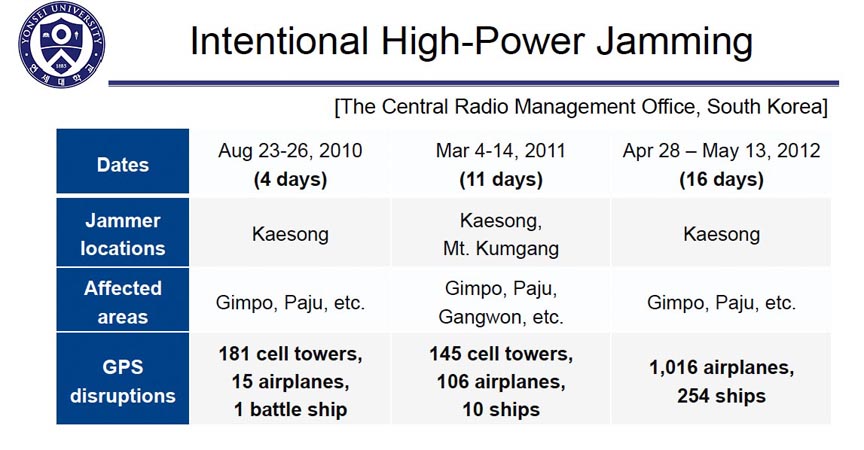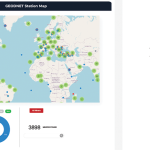After multiple reported incidents of jamming attacks, South Korea is working hard to develop an earth-based navigation technology as an alternative to GNSS to protect its ships from cyber-attacks.
The planned eLoran earth-based navigation technology is an upgraded version of the radio technology originally used for communication purposes during World War II. South Korea currently has a Loran-C system in place, but it’s looking to improve its coverage. The country’s eLoran project is based on converting and adding to the existing system.
The latest step in the development of the technology follows incidents of jamming attacks on South Korean ships. One such incident last year saw the early return of hundreds of fishing vessels to its ports after their GNSS signals were jammed by hackers, allegedly originating from North Korea.
Professor Jiwon Seo from Yonsei University, an advisor on eLoran to the South Korean government, confirms that “attacks from the North” are a driving force for plans to develop a more extensive and powerful eLoran network.
“Our on-going eLoran project aims to build an eLoran testbed by 2019 to demonstrate its maritime functionality in the West Sea of Korea, where significant GPS disruptions have been observed during the past GPS jamming attacks from the North,” said Seo, who is a member of the Resilient Navigation and Timing Foundation (RNTF) Advisory Council.
For the testbed implementation, the two current Loran-C transmitters in South Korea will be upgraded to eLoran transmitters. The Consortium led by the Korea Research Institute of Ships and Ocean Engineering (KRISO) will deploy a new eLoran transmitter to enable eLoran-based navigation, which requires a minimum of three transmitters, Seo said.
Two differential correction stations will be deployed as a part of the testbed to increase navigation performance, and the Consortium is hoping to secure a contract for the necessary equipment purchases this year.
“As the functionality of eLoran has been well demonstrated by the U.S. and the U.K., I do not think the technical challenge to implement the Korean eLoran testbed is high,” Seo said. “However, contractual and financial problems to purchase an eLoran transmitter have been one of the major issues delaying the progress since I first announced the Korean eLoran project at the European Navigation Conference in 2013.”
South Korea’s original plan has been modified several times to reach the current plan, and Seo is hopeful the “related bodies reach a good agreement this year for successful testbed implementation, which will be an important stepping stone toward a nationwide Korean eLoran system as first envisioned in 2013.” For more details, read “South Korea Relaunches Its eLoran Program” online.
RNTF President Dana A. Goward said South Korea’s implementation of an eLoran network has been needed for some time.
“South Korea’s project to an upgrade of their Loran-C system to a more extensive and powerful eLoran network follows years of intermittent, low level jamming for very short periods of time by the North,” Goward said. “While it has impacted aviation and maritime operations and disabled cell towers, so far the jamming seems to have been mostly an irritant to South Korea. I am sure the South is very concerned, though, because it has repeatedly demonstrated the vulnerabilities of a wide variety of technologies, and North Korea’s ability to do much more damage if they wish.”
The RNTF, which regularly tracks and reports jamming incidents and addresses the benefits of position, navigation and timing backup, recently reported on a possible mass GPS spoofing attack in the Black Sea. The resilient navigation and timing group researched and presented a chart last year on the history of North Korea’s jamming: https://rntfnd.org/wp-content/uploads/Korea-Jamming-Chart.jpg
“The ease with which North Korea and its agents can jam GPS signals, and its eagerness to humiliate many western governments could make widespread GPS jamming a more likely threat than its nascent nuclear arsenal,” Goward concluded.
Vessels at sea currently make use of GNSS systems and similar devices that depend on satellite signals for operation, which can potentially be jammed by hackers. Unlike airplanes, ships do not usually possess a back-up navigation system so there are risks of collision should there be any GNSS disruptions.
Earlier this week a U.S. Navy Destroyer collided with a merchant vessel off the coast of Singapore. The crash involving the USS John McCain is the fourth in the area, which has raised suspicion of cyber-attacks or a possible lack of proper training.

.jpg)




